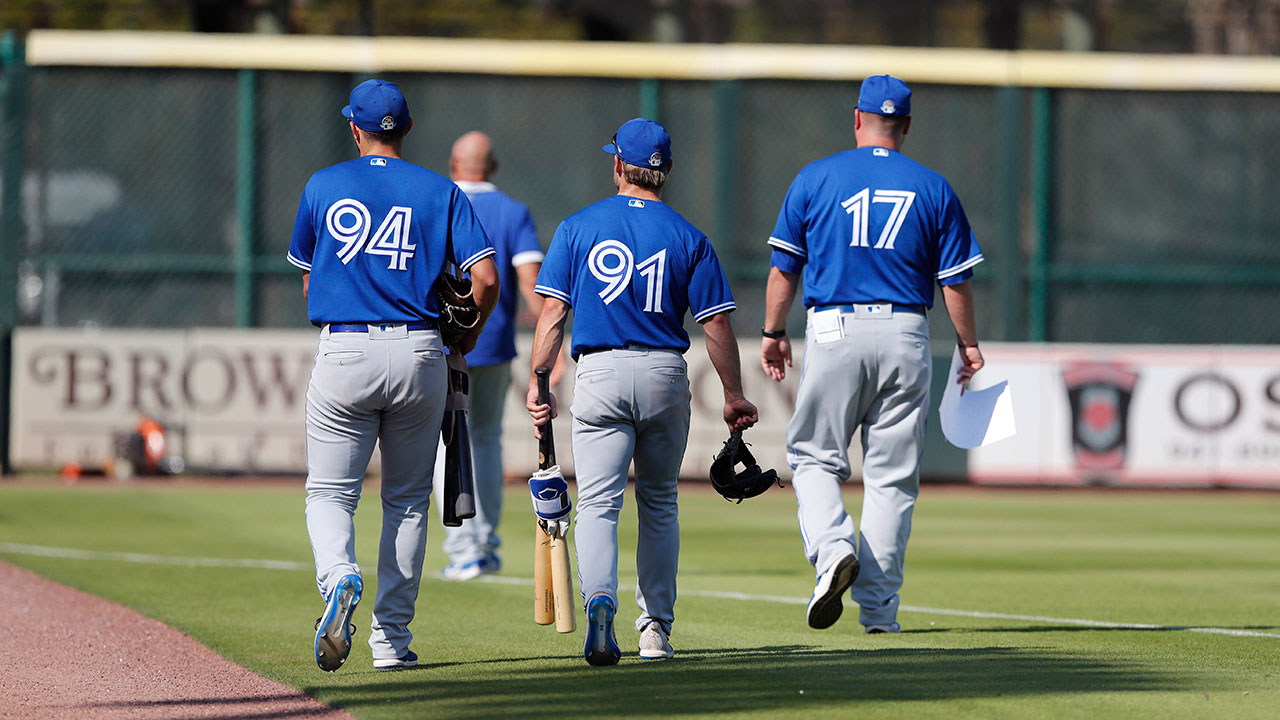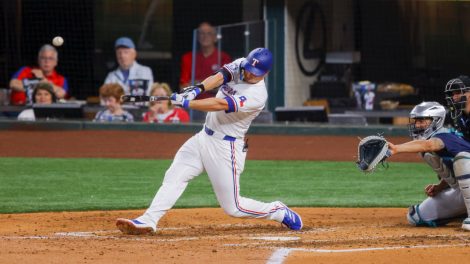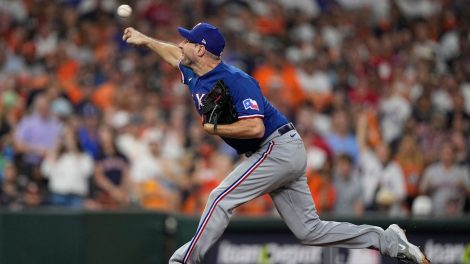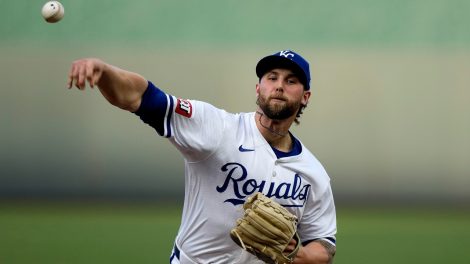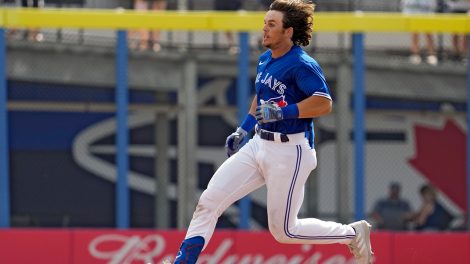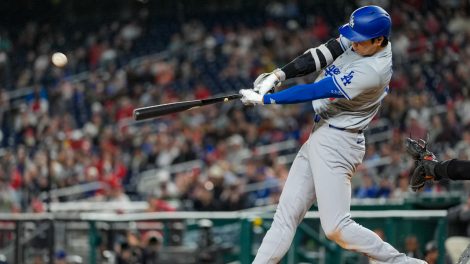TORONTO – The opening month of the 2009 season carried breakout promise for Jimmy VanOstrand, whose first full year at double-A started off with a 1.253 OPS over the first 17 games. A year earlier, a nine-game stint in the middle of June with the Corpus Christi Hooks in the Houston Astros system hadn’t gone nearly as well, so the torrid start offered immediate validation for his promotion.
Only the moment May arrived, things went sideways for the hard-hitting first baseman from Richmond, B.C. A .595 OPS over the next five and a half weeks caused his numbers to not only regress, but collapse completely. Once he started outwardly projecting those struggles, Keith Bodie, his hitting coach at Corpus Christi, stepped in.
“He was really, really good at helping me realize the importance of bringing a good person to the clubhouse, as opposed to just being the player,” says VanOstrand. “I was so focused on my numbers, which is an easy trap to fall into, it wasn’t the best version of myself that was showing up day-in, day-out. He was instrumental in helping relay to me the importance of the way I’m impacting the rest of our club through the person I am in the clubhouse. That had a huge effect on me, and something I still keep in my mind to this day.”
These days, Bodie’s intervention is just one example VanOstrand can pull from his eight-year minor-league career and a decorated run with the Canadian national team during his work with the Toronto Blue Jays as a major-league mental performance coach.
The 35-year-old will be embedded with the Blue Jays if and when there’s a 2020 season, part of the latest evolution in the club’s ongoing investment in sports psychology. Paddy Steinfort, who is now with the NBA’s Philadelphia 76ers, was hired in 2016 as the club’s first mental performance coach, although his responsibilities ran up and down the organization.
Ben Freakley replaced him last year as the head of mental performance, and again split duties between the major and minor-leagues. During the off-season, the Blue Jays decided Freakley needed to be localized in Dunedin, Fla., to better co-ordinate what’s now a department of six, including the recently added John Lannan, the former Washington Nationals left-hander.
That led Angus Mugford, the club’s vice-president, high performance, to lure VanOstrand from the Seattle Mariners, where last he split his duties 60/40 between the majors and minors, although working for the team he watched growing up required little arm-twisting.
“When the Jays were successful in the ‘90s is when I was just falling in love with the game,” he says. “Being able to witness first-hand the effect our team has on our country is pretty special.”
[snippet id=3305549]
Unlike Steinfort (Australian rules football) and Freakley (U.S. military), VanOstrand brings a former baseball player’s perspective to the role. An eighth-round pick by the Astros in 2006, he played eight seasons in the Houston and Washington systems, topping out at triple-A before retiring after the 2013 campaign.
Some of his brightest moments on the field were with the Canadian national team, highlighted by a two-run single that carried Canada past the United States 2-1 in the gold-medal final at the 2011 Pan American Games. Another pivotal effort came during the qualifying tournament for the 2008 Olympics, when his collision at home with Chinese Taipei catcher Chun-Chang Yeh caused the benches to empty. VanOstrand later doubled home the winning run in the 10th inning, securing a key victory that helped pave the path to the Beijing Games.
“There were a handful of us that were together for a bunch of those events and it was so fun competing with that group,” he says. “There’s something special about representing your country.”
Once done playing, however, there was no clear path forward for VanOstrand, who earned a kinesiology degree from California Polytechnic State University in 2008. All he knew is that he wanted to work in the game.
He decided to try coaching and spent two years volunteering as an assistant under Mike Gambino at Boston College. That led to a director of player development position under head coach Jay Johnson at the University of Arizona, a school he had always rooted for because his parents met there.
A year later, Mariners director of player development Andy McKay approached him about joining the organization as a peak performance coach, and “really envisioned the path and helped paint the picture a little bit for me,” says VanOstrand.
Along the way he earned a master’s degree in psychology from California Southern University, with a sports emphasis, and he’ll be relying on that winding road in his role with the Blue Jays.
“Throughout my playing career there were ups and downs and you realize how big of a component the mental side of things can be in coping with that well,” says VanOstrand. “The fact that I can speak from some of those previous experiences is really, really valuable, but it’s also important for me to be very aware that everybody’s experience is different. It helps that I’ve been through my own journey to relate a little bit, but everybody’s got their own path so really, it’s about learning what they’re dealing with, and how to make them as successful as possible in whatever they want to chase down and accomplish.”
[snippet id=4888368]
To that end, VanOstrand’s goal is that “mental-performance won’t be a shortcoming” in the careers of his players. His approach is a low-key one, trying to build relationships and trust at the outset that, ideally, encourages players to approach him with their goals.
VanOstrand also sees himself as a resource for the entire coaching staff, collaborating with the different disciplines to try and provide the proper voice at the right time. As a player he sought to create a collective in the clubhouse and though his vantage point has changed, the end has not.
“There’s still nothing better than when our guys find ways to get a win, find ways to work together to make things happen,” he says,
The COVID-19 pandemic has added a unique new layer to his work, interrupting his integration into a new clubhouse while also creating an unprecedented set of challenges. As a counter to the ongoing uncertainty that can drain motivation and conviction, the Blue Jays are stressing to their players the skill it takes to become elite athletes in the first place.
“Our guys are really resilient, are really tough,” says VanOstrand. “A big part is just reminding them that they’re built for these types of things. They’ve gotten to where they are by overcoming obstacles, by dealing with tough circumstances and making the best out of them. That’s what we have to do now. A challenging situation is an opportunity to figure out a solution. The biggest thing we’re trying to do now is be there to support them, remind them of the skills they do have now to cope and deal with this effectively, and then help them stay ready for hopefully a season.”
[relatedlinks]

